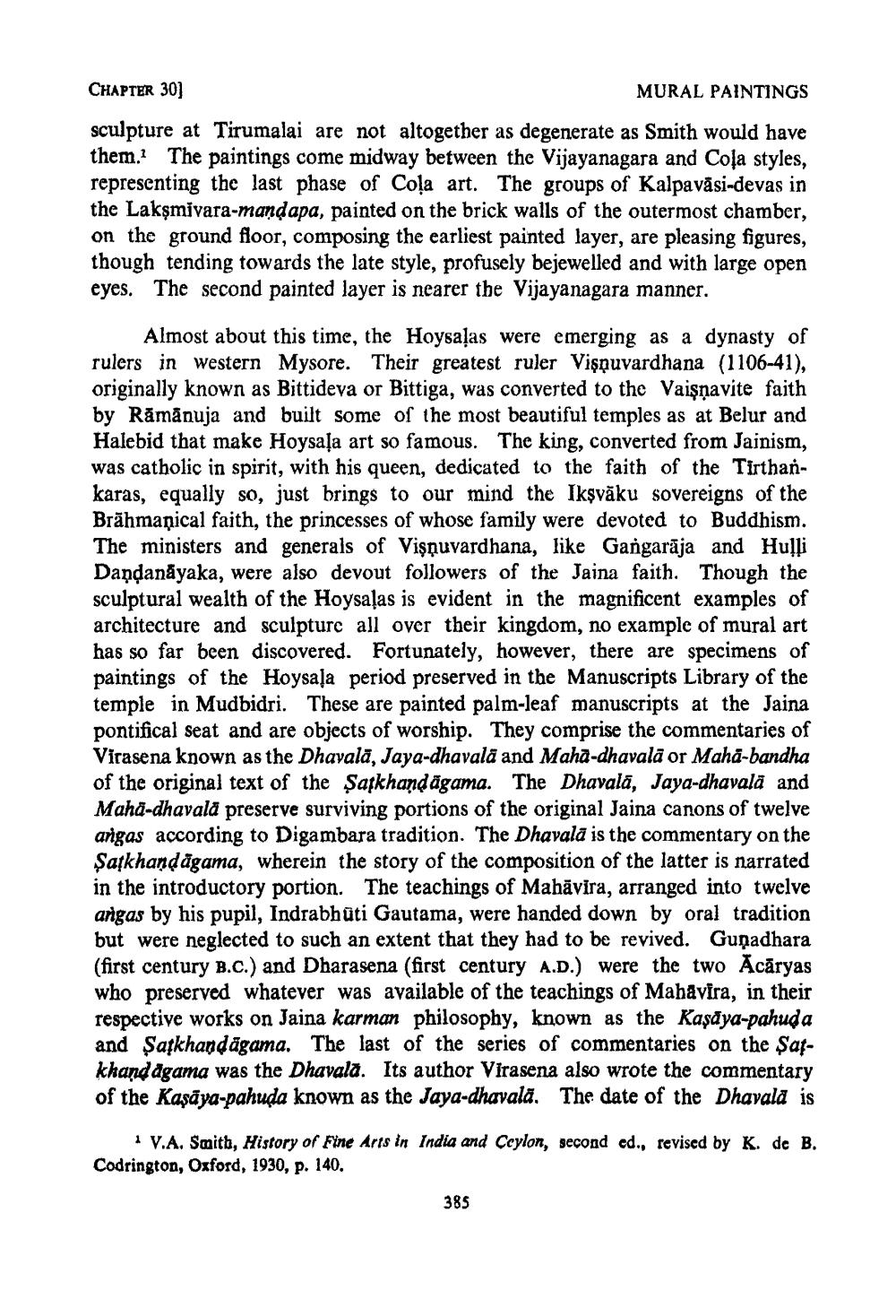________________
CHAPTER 30]
MURAL PAINTINGS
sculpture at Tirumalai are not altogether as degenerate as Smith would have them. The paintings come midway between the Vijayanagara and Coļa styles, representing the last phase of Cola art. The groups of Kalpavāsi-devas in the Lakşmivara-mandapa, painted on the brick walls of the outermost chamber,
ground floor, composing the earliest painted layer, are pleasing figures, though tending towards the late style, profusely bejewelled and with large open eyes. The second painted layer is nearer the Vijayanagara manner.
Almost about this time, the Hoysalas were emerging as a dynasty of rulers in western Mysore. Their greatest ruler Vişpuvardhana (1106-41), originally known as Bittideva or Bittiga, was converted to the Vaişņavite faith by Rămânuja and built some of the most beautiful temples as at Belur and Halebid that make Hoysaļa art so famous. The king, converted from Jainism, was catholic in spirit, with his queen, dedicated to the faith of the Tirthankaras, equally so, just brings to our mind the Ikşvāku sovereigns of the Brāhmaṇical faith, the princesses of whose family were devoted to Buddhism. The ministers and generals of Vişnuvardhana, like Gangarāja and Hulji Dandanayaka, were also devout followers of the Jaina faith. Though the sculptural wealth of the Hoysaļas is evident in the magnificent examples of architecture and sculpture all over their kingdom, no example of mural art has so far been discovered. Fortunately, however, there are specimens of paintings of the Hoysala period preserved in the Manuscripts Library of the temple in Mudbidri. These are painted palm-leaf manuscripts at the Jaina pontifical seat and are objects of worship. They comprise the commentaries of Virasena known as the Dhavalā, Jaya-dhavala and Maha-dhavalā or Maha-bandha of the original text of the Şapkhandāgama. The Dhavalā, Jaya-dhavala and Maha-dhavala preserve surviving portions of the original Jaina canons of twelve angas according to Digambara tradition. The Dhavala is the commentary on the Şarkhandägama, wherein the story of the composition of the latter is narrated in the introductory portion. The teachings of Mahāvira, arranged into twelve angas by his pupil, Indrabhūti Gautama, were handed down by oral tradition but were neglected to such an extent that they had to be revived. Gunadhara (first century B.C.) and Dharasena (first century A.D.) were the two Acāryas who preserved whatever was available of the teachings of Mahavira, in their respective works on Jaina karman philosophy, known as the Kaşaya-pahuda and Sarkhandagama. The last of the series of commentaries on the Safkhand agama was the Dhavala. Its author Virasena also wrote the commentary of the Kasāya-pahuda known as the Jaya-dhavala. The date of the Dhavala is
* V.A. Smith, History of Fine Arts in India and Ceylon, second ed., revised by K. de B. Codrington, Oxford, 1930, p. 140.
385




